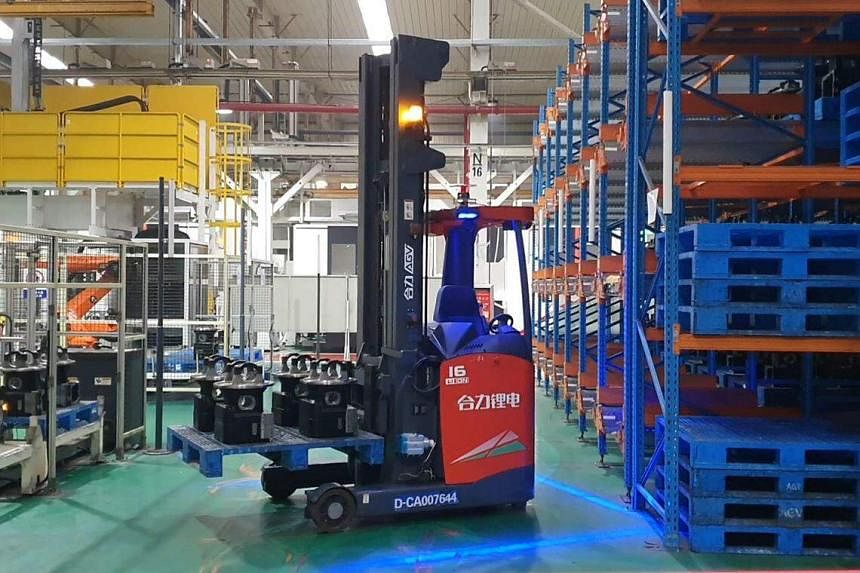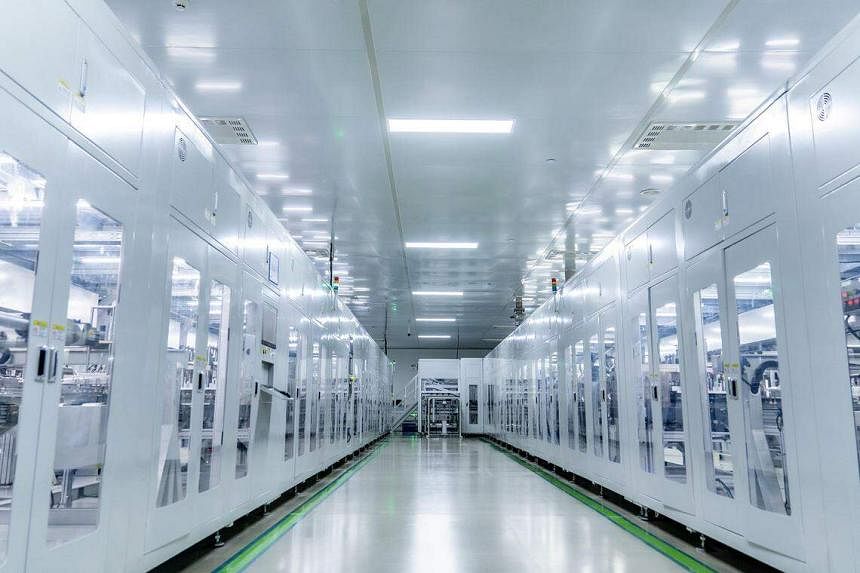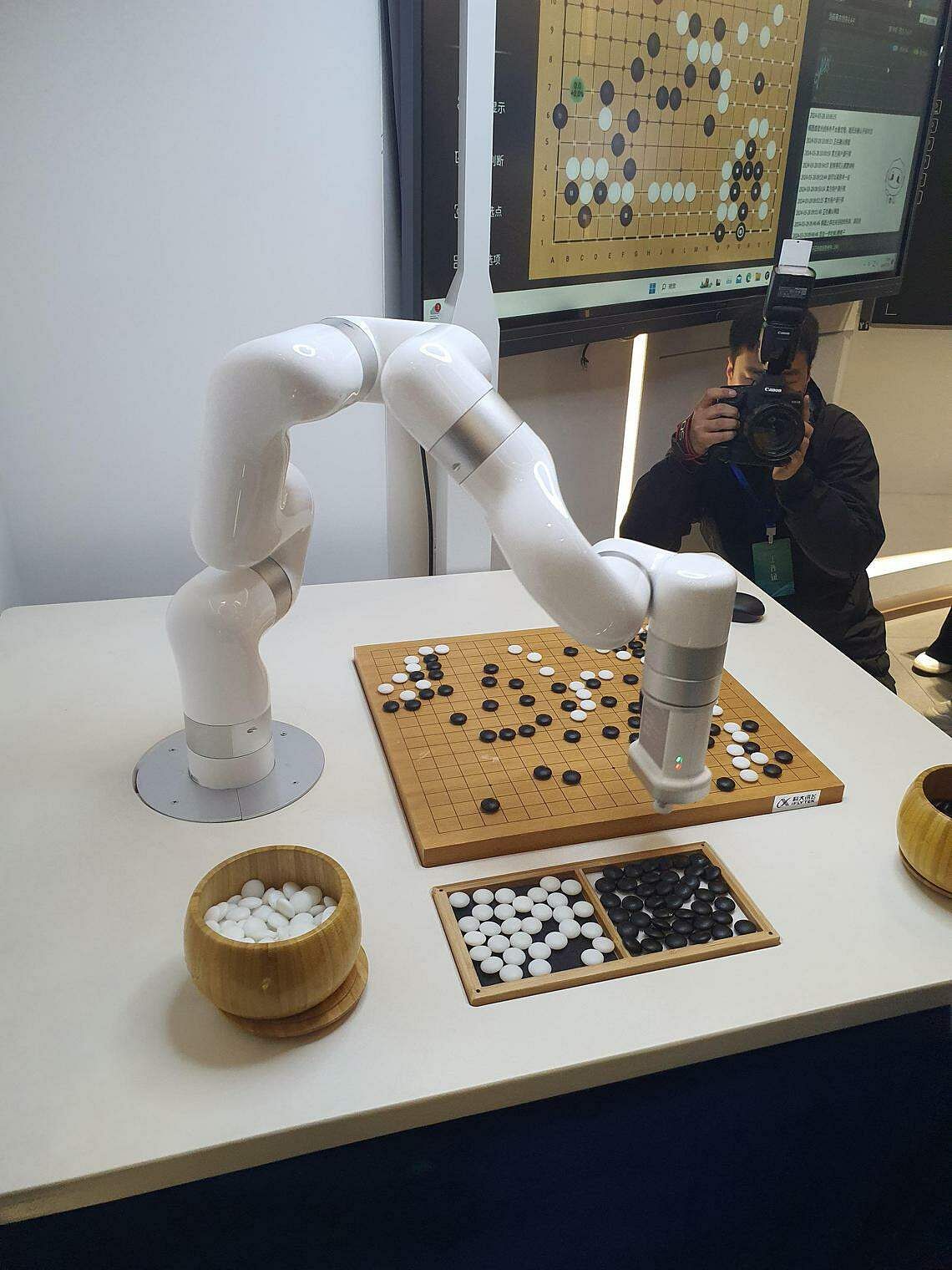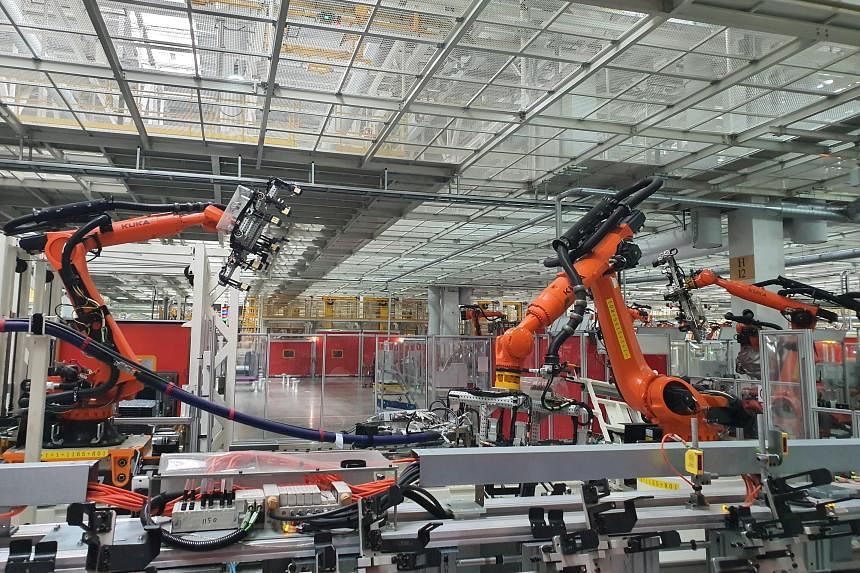HEFEI/BEIJING – Hefei is a historical city known as the birthplace of the upright Song dynasty judge Bao Zheng, or Bao Gong, as he is more popularly known.
What is less well known is that this ancient city is now a hothouse for leading-edge technologies from quantum computing to nuclear fusion.
On its outskirts in a leafy sanctuary known as Science Island, scientists work on projects such as developing nuclear fusion, a form of clean energy that leaves no radioactive waste.
On Quantum Street in the west of the city, more than 20 quantum technology firms housed in tall towers aim to make breakthroughs in areas such as quantum computing, high-precision measurements and secure communications.
This city of 9.85 million people, the capital of the agricultural province of Anhui and a one-time backwater, has been making waves in China in recent years as a high-tech production hub and a model for developing new industries.
In the past two decades, Hefei’s economy grew more than 25-fold, or more than double the national growth rate. Its gross domestic product of 1.27 trillion yuan (S$242 billion) in 2023 ranks 20th nationwide.
State-led investments from the city’s government have paid off, creating high-tech industrial clusters ranging from artificial intelligence (AI) to new energy vehicles (NEVs), according to officials, businesses and analysts that The Straits Times spoke to.
And Hefei might just hold the answers as China eyes high-value industries and scientific innovation to boost its economy amid slowing growth and weak domestic consumption.
High-tech makeover
In Hefei, on average one NEV rolls off the production line every minute, state media cited a local official as saying in 2023.
The city was China’s fourth-largest producer of NEVs in 2023. Brands like Nio, BYD and Germany’s Volkswagen produce such cars there.
NEVs are just one of several strategic and emerging industries in Hefei – others include photovoltaics, semiconductors, liquid crystal displays (LCDs) and biomedicine.
Further down the value chain, the city’s traditional industries too are reinventing themselves, pursuing smarter and greener offerings – sometimes at the government’s nudging.
For instance, Anhui Forklift Group, an industrial vehicle manufacturer of more than 60 years, has updated its products to include new energy powered equipment and intelligent logistics offerings such as autonomous machinery.

Hefei’s high-tech endeavours have come under the spotlight amid renewed national attention on growing these industries, with Premier Li Qiang calling for the acceleration of “new quality productive forces” in his government work report in March 2024.
The slogan, introduced by President Xi Jinping in September 2023, is seen as a clarion call for the country to boost industrial upgrading and cultivate innovation.
These include the “Big Three” green technologies of NEVs, lithium-ion batteries and solar panels, which had a combined export value of 1.06 trillion yuan in 2023, a 30 per cent increase from 2022.
China met its GDP target with 5.2 per cent growth in 2023, but its 2024 goal of around 5 per cent is widely seen as ambitious, given challenges such as a still-weak property sector and muted domestic consumption.
The “Hefei model”
Amid a nationwide push for innovation, Hefei’s success in developing high-tech industries, dubbed the “Hefei model”, is one that other localities in China have been keen to learn from, if not replicate.
Key to its playbook is savvy local government investments in promising companies from both Hefei and beyond that go on to become leaders in their fields.
These companies that locate production and research facilities in the city draw others in the field – and along the supply chain – to set up shop in Hefei as well.
One of Hefei’s most famous gambits is its 2008 investment in LCD maker Boe Technology, at a time when the industry was still nascent in China.
The city halted a subway project to invest in the Beijing-headquartered Boe, which built factories in Hefei and is now a world leader in LCD displays. This created for Hefei an industrial cluster in display devices whose annual output exceeds 100 billion yuan.
The city similarly made inroads into the semiconductor and NEV industries by helping to establish chipmaker ChangXin Memory Technologies in 2017 and by injecting 7 billion yuan into struggling NEV maker Nio in 2020.
Directing these investments, and with it Hefei’s industrial policy, is a corps of technocrats armed with deep sectoral knowledge.
Teams of experts closely study the industries and inspect their underlying technologies, before making investment decisions in consultation with professional bodies, said Mr Luo Wenshan, deputy director of Anhui’s department of industry and information technology, to visiting reporters.

Local cadres acquire industry knowledge through attachments at the city’s universities, and even junior officials are au fait with the entire industrial chain, according to a document summarising lessons from Hefei that was written by officials from Luoyang, a city in Henan province.
One of these universities is the University of Science and Technology of China (USTC), a top institution sometimes known as China’s Caltech, on which the city’s tech scene thrives.
USTC and its graduates have spawned over 30 listed companies in fields such as AI, quantum technology and semiconductors. Among these is iFlytek, a speech technology and AI giant whose large language model, SparkDesk, has been positioned as a rival to ChatGPT.
Together with other research and engineering institutions in the city, the university also produces a rich pool of talent, which companies say is one of the factors that attract them to Hefei.
Not just copy and paste
Even if cities across China channel Hefei in their pursuit of “new quality productive forces”, replicating its success will not be straightforward, analysts say.
With increased intercity competition, there is a risk that these localities race each other to the bottom in a bid to attract new strategic industries, said Dr Yu Hong, a senior research fellow from the East Asian Institute at the National University of Singapore.
Resources such as talent will be in high demand, which could lead to shortages, a problem that Hefei is already facing despite inbound migration and incentives to attract talent.
In the next three years, Hefei’s NEV industry alone is likely to see a shortage of 30,000 people who have the relevant expertise for the field, said Mr Zhang Yun, deputy director of Anhui’s development and reform commission.
Battery-maker Gotion Hi-Tech has a similar problem. Its senior vice-president Wang Qisui sees a shortage not just of experts, but also of blue-collar workers equipped to work in the new energy industry.
Another challenge is funds. Premier Li has called on officials to tighten their belts, and local government debt remains a pressing problem.
Hefei’s 2008 investment in Boe entailed 6 billion yuan in government funds, more than a third of the city government’s revenue that year. Such a gambit is difficult to conceive of in today’s context.
Geopolitical headwinds too are weighing on China’s high-tech endeavours. These could affect export demand for the high-tech products that cities like Hefei make, and make it harder for companies in cutting-edge industries like AI to access advanced components from abroad.
The country’s overcapacity in its “Big Three” green technologies has been the subject of scrutiny by the United States and the European Union, with the EU launching an anti-subsidy probe in 2023 that could lead to additional tariffs on Chinese electric vehicles exported to the bloc.
EU trade barriers will have some effect on Anhui’s exports, acknowledged Mr Zhang from the provincial government. But he noted that the global market was large, the province’s exports elsewhere were doing well, and that it could always develop other markets.
The US’ clampdown on China’s access to American technology has also affected key players.
iFlytek, the AI company, was in 2019 placed on a US sanctions list that bars it from buying American component parts without government approval.

The US is reportedly considering adding chipmaker ChangXin to the list, Bloomberg News has reported.
“It will be difficult for other regions to copy Hefei’s model, but it is not entirely impossible,” said Dr Yu.
The crux lies in whether local governments have the wisdom to correctly identify an industry that will work for them, and whether they have the right industrial policy to see it through, he said.
“But of course, they need to take some risk – it’s like a gamble,” he said, referring to government investments.
Can China truly innovate?
Even if existing high-tech hubs can be replicated, a larger question remains whether China – known more for its manufacturing prowess and ability to reinvent existing technologies, from aviation to chip-making equipment – can produce truly ground-breaking innovations.
Some challenges include its under-funding of basic research and of research and development (R&D), which are crucial to innovation.
China is now belatedly addressing its under-investment in basic research, or scientific work that is often curiosity or passion-driven, focuses on adding new knowledge about the world and has no immediate practical or commercial applications. Such research has sometimes turned out to be valuable later in producing important and lucrative inventions.
China’s ratio of R&D funding to GDP was 2.64 per cent in 2023. This is much lower than world-leading countries such as Israel and South Korea, whose comparable figures are closer to 5 per cent. But Beijing has doubled its spending on basic research in the five years up till 2023.
Professor Sun Yutao from the Dalian University of Technology’s School of Economics and Management said that while China may not currently boast world-leading technologies, the country has made tremendous strides in many fields, including nuclear fusion, high-temperature superconductors and high-speed railways.
Prof Sun believes there is no straightforward answer on whether China’s state-led approach – as compared to other countries where the private sector undertakes significant R&D – could ultimately yield results. China’s large-scale investment in science and technology really only took off after 1978, which is still a relatively short period of time, he noted.
The emphasis given to basic research in high-level plans, such as the national 14th Five-Year Plan for 2021 to 2025, and a desire to ramp up such investment despite a slower economy show that the top leadership does appreciate its “long-term, strategic importance”, said Prof Sun, who co-wrote a recent book on China’s science, technology and innovation policies.
Other observers agree it would be too early to write China off.
Associate Professor James Pang from NUS said that government investment has historically played an important role in basic research across various countries, providing essential groundwork for technological and commercial advances.
Through funding research institutions, universities and projects, such government investment is able to support the initial exploration that paves the way for applied research and societal benefits, said Prof Pang, who specialises in business analytics.
“China’s state-led innovation strategy could succeed if it remains adaptive and leverages both government and private sector strengths, much like South Korea and Japan’s effective state interventions that sparked tech growth,” he said.
Professor Michele Geraci believes that for China to achieve innovation, a more fundamental solution lies in education reform, so that students are incentivised to study what they like and are good at what they do – as opposed to what is the most lucrative or considered prestigious by society.
Prof Geraci, a visiting professor of finance and economics at New York University Shanghai, raised the example of Silicon Valley in California – the birthplace of modern computing technology – which took off from the 1960s because people were free to do what they wanted, and failure was not looked down upon.
But education reform is a complex one because it also concerns societal attitudes, said Prof Geraci, who believes people who study what they are passionate about leads to better use of human capital, and in turn innovation.
“You want to reach the point where people won’t look down on you because you don’t have a car and house.”
While learning from winning models like Hefei’s will help, China’s pathway of growth through innovation will also require more investment in research and developing its talent pool, say analysts.

